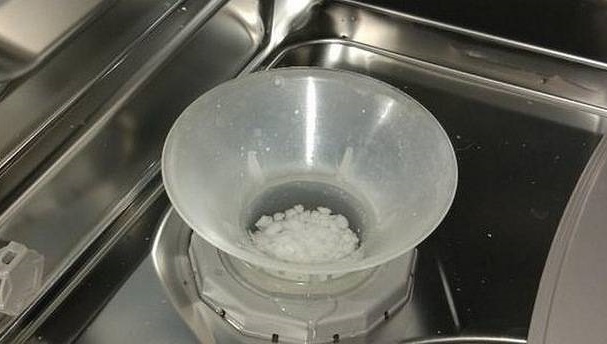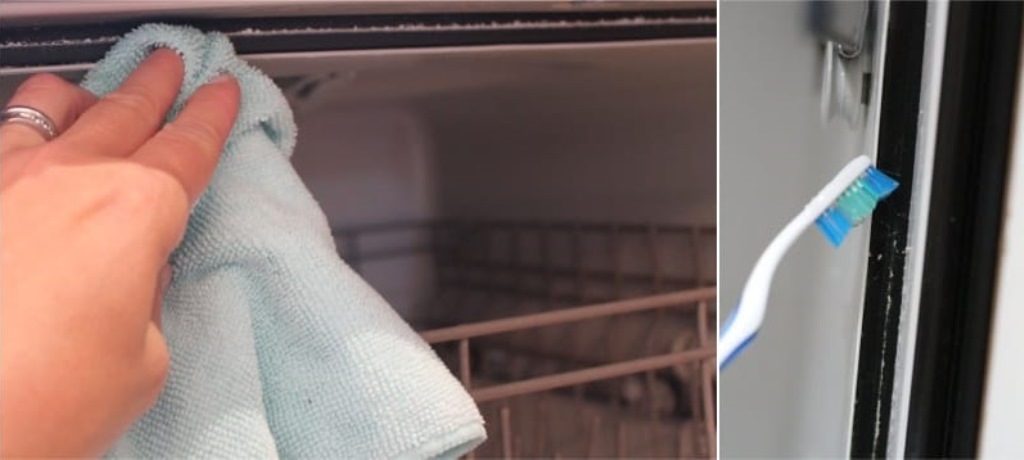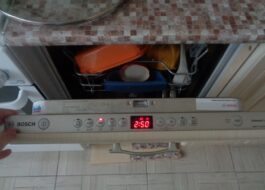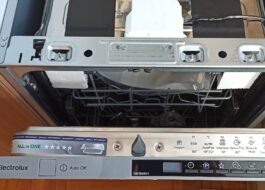How to use a Hansa dishwasher
 New dishwashers themselves are easy-to-use devices that even a child can handle. However, modern models have many additional options and complex functions that it is better to know about in advance. In order to use the Hansa dishwasher correctly, we recommend that you first read the official manual or simply read this article, in which we described in detail all the nuances of washing dishes in the PMM.
New dishwashers themselves are easy-to-use devices that even a child can handle. However, modern models have many additional options and complex functions that it is better to know about in advance. In order to use the Hansa dishwasher correctly, we recommend that you first read the official manual or simply read this article, in which we described in detail all the nuances of washing dishes in the PMM.
Starting to use the dishwasher
The first thing you need to do after purchasing a brand new “home assistant” is to run the idle cycle without dishes. This action will allow you to:
- completely clean the internal components of the machine from dirt, dust and technical liquids that may have remained during the assembly of household appliances at the factory;
- make sure that the device is connected correctly, all functions are normal, and water is not leaking anywhere.
Before idle start, first add about a liter of water to the salt bin located at the bottom of the washing chamber so that the water completely fills the tank, and then pour about a kilogram of special salt there. If saline solution spills onto the bottom of the machine, wipe it with a cloth or run a cycle to remove it, but do not leave it in the chamber, otherwise it may damage the device.
It is better to use salt specially created for dishwashers, since it is much better purified than ordinary table salt, its granules are larger, so it takes longer to dissolve and better restores the machine’s ion exchanger. After salt, you should add detergent to the dispenser, which can be in the form of tablets, powder or gel, and also pour rinse aid into the special compartment, which is necessary to ensure that there are no streaks left on the dishes.
It’s more effective and cheaper to use household chemicals separately instead of buying 3-in-1 tablets, which are easier to use, but that’s where their benefits end.
Only after successful completion of the dry test can you begin to fully use your Hansa dishwasher. If everything is in order with the equipment, then we proceed to loading the washing chamber.
Placing items in dishwasher baskets
This may seem strange to some, but the quality of washing depends not only on the quality of the detergents and the selected operating mode, but also on whether the dishes are correctly laid out in the baskets. Each kitchen item must be in its place, and even in the correct position, so for ideal washing results, carefully study the following instructions.
- Most often, Hansa dishwashers have two baskets, an upper one for small items, and a lower one, into which the heaviest and largest items should be loaded.
- When loading mugs, plates and other small cutlery into the upper basket, you need to check that the dishes do not interfere with the movement of the spray arm.
If the machine has an additional function for adjusting the height of the trays, then it is better to install them in advance so that they never block the sprinkler with loaded dishes.
- If all the frying pans, saucepans, pots, baking sheets and other large utensils do not fit in the lower basket, then, if possible, it is necessary to fold special holders to free up additional space for cutlery items in the lower basket.
- Most of the Hansa brand machines are equipped with a special removable compartment for forks, legs, knives and small spatulas.
- Premium models are additionally equipped with an aluminum container in which silverware should be washed.

- Do not put too greasy dishes with food debris, bones, tea bags, tea leaves and napkins in the PMM - first clean the surface of debris, and then rinse the dishes from grease. This will not only save the machine from clogging, but will also save energy consumption required for pre-soaking.
- Always load the wash chamber one at a time, starting with the lower basket, then moving to the upper basket, and then to the cutlery tray.
- Place plates, tureens and various dishes with the inner surface towards the center of the chamber.
- Place large plates on the edges of the basket, and small ones in the center.
- Make sure that there is at least a minimum gap between items so that water can circulate freely between the dishes.
- All vessels, such as cups, glasses, glasses and pans must be installed upside down to prevent water from accumulating in them.
- Dishes made of fragile glass and crystal must be placed so as not to touch any other objects, otherwise they may crack and break during washing.
- Place the trays sideways so that they do not interfere with the circulation of water in the PMM.
- Do not wash heavily soiled dishes with less dirty cutlery.
In the end, the most important thing is not to overdo it with loading dishes. The dishes should not be piled up in the washing chamber, otherwise the machine simply will not be able to thoroughly wash each item. It is better to divide a large amount of dishes into several washes so that the machine does not overwork and the quality of the wash does not suffer. And after loading, be sure to double-check that the water spray arms are not blocked by dishes.
PMM service
Proper use of a dishwasher directly depends not only on the correct use of all its functions, but also on timely professional care of expensive devices. If you do not devote time to this, then during operation the quality of the wash will seriously deteriorate, and the PMM itself may even fail. To prevent this from happening, use our Hansa dishwasher care instructions.
- After each working cycle, clean the debris filter installed in the equipment at the bottom of the chamber. You can simply rinse it under a powerful stream of hot water, thus removing leftover food and other debris.
- Also, after using the equipment, you should check the rubber door seals, as pieces of food often get caught in them.
- Wipe the washing chamber dry with a dry cloth, and then leave it open for several hours to ventilate the machine. This will help prevent mold and unpleasant odors.

- Once a quarter, it is worth using a special cleaner for dishwashers, which will clean the internal components of the PMM from grease, dirt, plaque and other debris that accumulates in the hoses and the most inaccessible places of the equipment.
If your water supply is very hard, you can not only increase the hardness settings to soften the water more effectively, but also buy special multifunctional detergents for high-quality dishwashing and gentle care of the machine.
The use of special household chemicals, coupled with careful and regular care, is the key to long years of “life” of the dishwasher. Follow all the recommendations listed above, and your dishes will always be crystal clean.
Interesting:
Reader comments
- Share your opinion - leave a comment
Categories
Washing machine repair


For buyers

For users

Dishwasher

















Add a comment